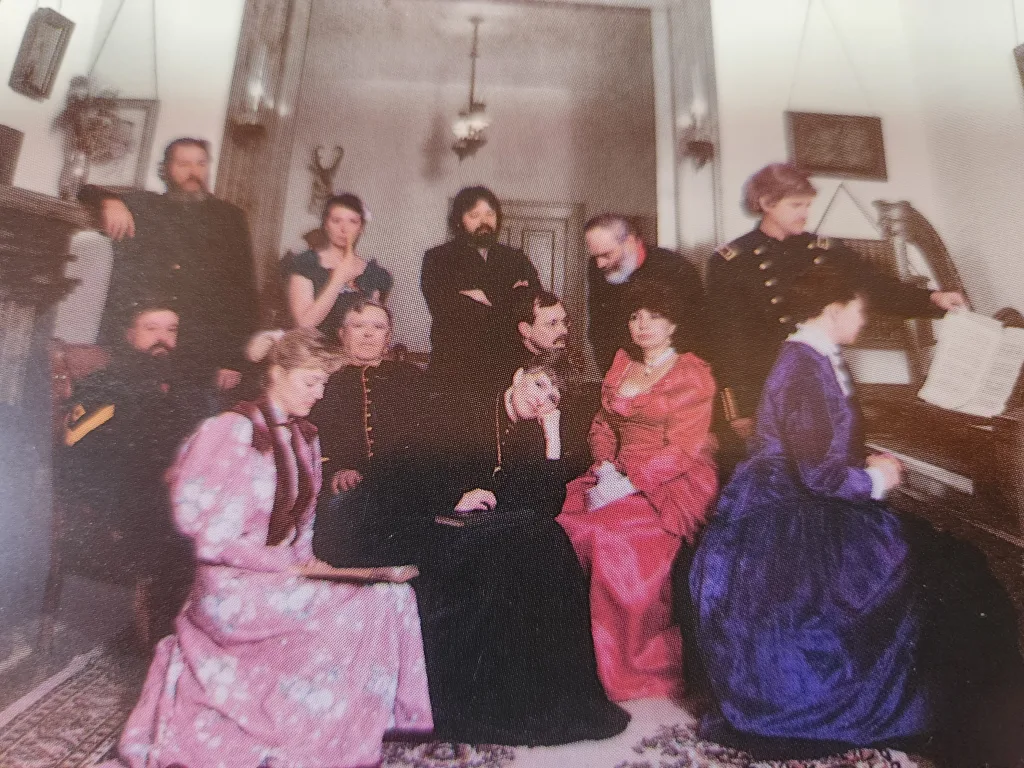

North Dakota’s capital city of Bismarck took grew out of some of the wickedest days in frontier history. The Northern Pacific Railroad, advancing from the populated East, made it as far as the Missouri River. It was there that Edwinton, later renamed Bismarck, was born.
It would be several years before funds were appropriated to bridge the Missouri, which was then the edge of the Sioux nation. Thus, Bismarck was the end of the line for roughies, gamblers, and assorted lawbreakers fleeing from the East. Many of them vowed to make Bismarck their last stand, vowing to “die with their boots on.
An early directory of the soon to be booming frontier town listed a population of 1,000 adult men and an astounding 24 saloons. Bismarck’s Fourth Street became notorious for drinking and gambling, shootings and slayings.
Many of the fatal incidents involved soldiers from Fort Abraham Lincoln, located across the Missouri River from Bismarck. One of the country’s best-known personalities, Lt. Col. George Armstrong Custer, was commanding officer of the vaunted 7th Cavalry posted at Fort Lincoln.
Saloon frequenters that got into shooting row with a soldier could expect swift reprisal from others wearing the Army blue. The Army did not interfere in such matters and civil authorities lacked jurisdiction on a military post.
The only time Custer ever exerted his authority over anyone in Bismarck involved the stealing of Fort Lincoln grain which was to be used as feed for cavalry mounts. He led a company of soldiers across the frozen Missouri and lined them up in front of a storehouse on Bismarck’s Main Street.
The troopers opened the warehouse and removed sacks of grain clearly marked Ft. Abraham Lincoln. The warehouse was owned by John McLean, Bismarck’s mayor, who was said to have shown the proper amount of surprise at seeing the stolen grain sacks.
A few months later Custer arrested Charles McCarthy for cutting wood within the boundaries of the Fort Lincoln reservation. He tossed McCarthy into the guardhouse but released him a few days later at the urging of two attorneys from Bismarck. Ironically, McCarthy was elected sheriff two months later.
It was a Custer-led expedition into the Black Hills of present-day South Dakota that discovered gold, an event that ignited a gold rush and accelerated Bismarck’s growth. The city positioned itself as the best jumping off point for gold seekers heading to the Hills. Businesses flourished, mostly providing the flow of goods of all kinds headed for the latest bonanza. The Bismarck-to-Deadwood stage trail increased demand for horses, wagons, and supplies.
Deadwood quickly earned a reputation as a wild frontier town. The Eastern newspapers were enthralled with exciting tales from Deadwood. Clement Lounsberry, owner/editor of the Bismarck Tribune, made a trip to Deadwood in 1877 to see if the stories of lawlessness and mayhem were true.
He returned to Bismarck and wrote glowing accounts of Deadwood and Crook City, two well-known destinations in the Black Hills. However, Lounsberry added, “more murders occurred in the town of Bismarck during the first two years of its existence than has occurred in all of the towns of the Black Hills.”
